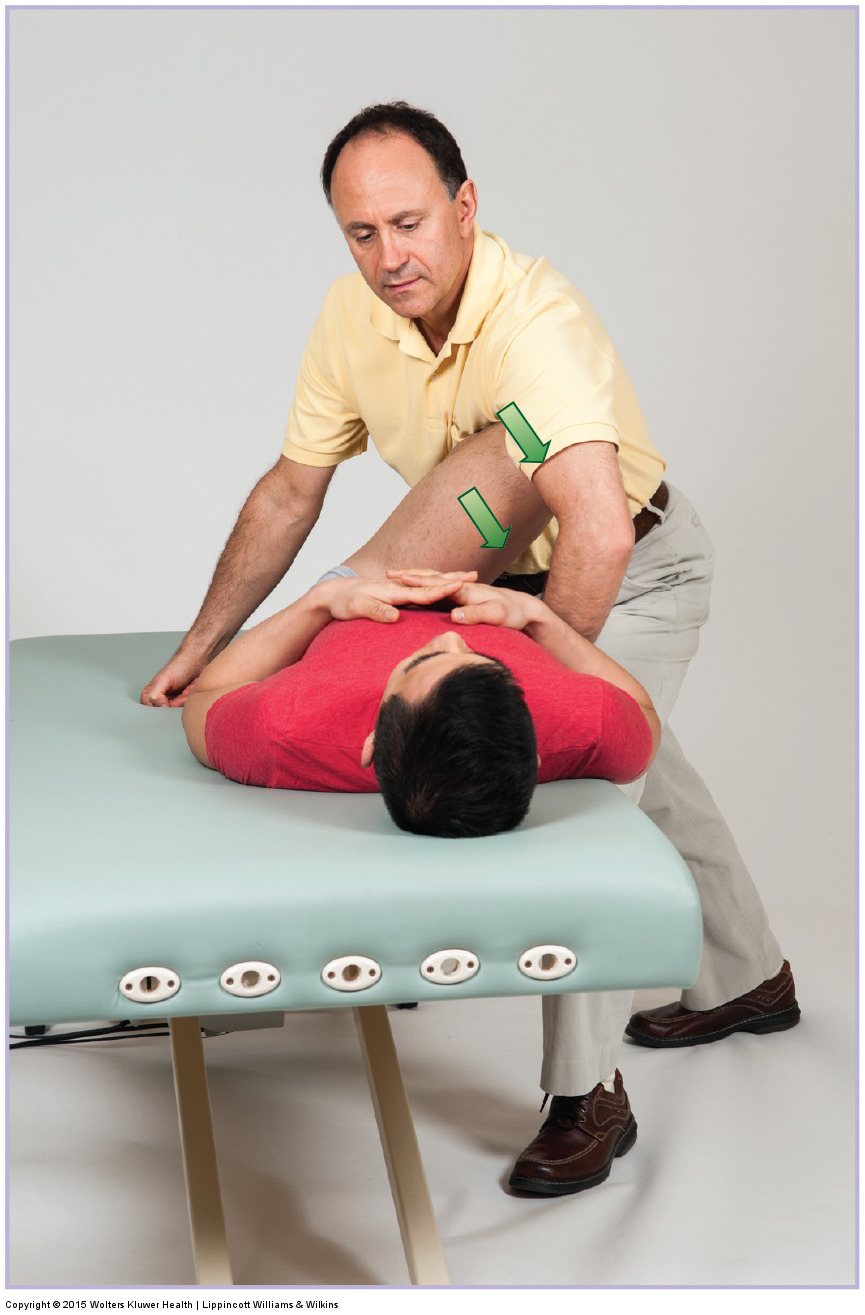Manual Therapy treatment for piriformis syndrome:
Treatment for a tight piriformis that is causing piriformis syndrome is directed at loosening the muscle. A tight piriformis can be treated very successfully with moist heat, soft tissue manipulation, and stretching. Moist heat is effective to initially warm up and relax the piriformis; application of a hydrocollator pack for approximately five minutes is sufficient. Whenever deep pressure is used, it is important to grade up to it by beginning with light and then medium pressure. Once deeper pressure is used, be sure to sink slowly into the piriformis and surrounding musculature. It is important to work as much of the piriformis as can be reached.
The piriformis responds well to strokes oriented across and along the length of the muscle. It is perhaps easiest to begin with cross fiber strokes just off the sacrum and gradually work laterally and distally/inferiorly toward the greater trochanter. A smaller contact such as a braced thumb allows for increased sensitivity and specificity when working the piriformis; however, the elbow is more effective at generating deep pressure to work through the gluteus maximus.

Horizontal adduction stretch for the piriformis using body weight. Permission: Joseph E. Muscolino. Manual Therapy for the Low Back and Pelvis – A Clinical Orthopedic Approach (2015).
Pin and stretch technique is also very effective at loosening tight areas within the piriformis for the client with piriformis syndrome, especially trigger points and taut bands located more laterally within the muscle. To apply pin and stretch to the piriformis with the client prone, first relax and slacken the muscle by passively laterally rotating the thigh at the hip joint, then place the contact into the muscle and apply firm pressure to pin the muscle at that point, then stretch the pinned piriformis by medially rotating the thigh at the hip joint.
Now stretch the piriformis with either the Figure 4 stretch and/or horizontal adduction stretch. The disadvantage to the Figure 4 stretch is that the leg is used as a lever; therefore a torque is placed on the knee joint. The horizontal adduction stretch avoids placing force through the knee joint, but clients often experience an uncomfortable pinching sensation at the anterior hip joint region with this stretch. This pinch can often be lessened by placing a small rolled-up towel along the inguinal ligament. If this does not work, the therapist can often successfully decrease or eliminate the pinching sensation by using their braced finger pads to traction the soft tissue and the femur distally from the acetabulum; the client’s/patient’s thigh should then be moved around the space created by this traction. Finally, whenever the piriformis is treated, it is important to assess the motion of the sacroiliac joints and mobilize them if necessary.
Summary of Manual Treatment Protocol for Piriformis Syndrome
| 1. Moist heat for approximately five minutes. |
| 2. Soft tissue deep pressure manipulation to the piriformis. An effective approach is to perform cross fiber strokes: begin at the sacrum and gradually work toward the greater trochanter |
| 3. Apply pin and stretch |
| 4. Stretch the piriformis using lateral rotation (Figure 4 stretch) and/or horizontal adduction of the thigh |
| 5. Mobilize (arthrofascial stretching for) the sacroiliac joint. |
Precautions/contraindications:
Care must be exercised to avoid placing excessive pressure directly on the sciatic nerve. If deep pressure in the gluteal region causes a sharp pain that shoots down the lower extremity, adjust your location slightly so that you are no longer pressing directly on the sciatic nerve. Regarding stretching of the piriformis, avoid the Figure 4 stretch if the client/patient has an unhealthy knee joint.


